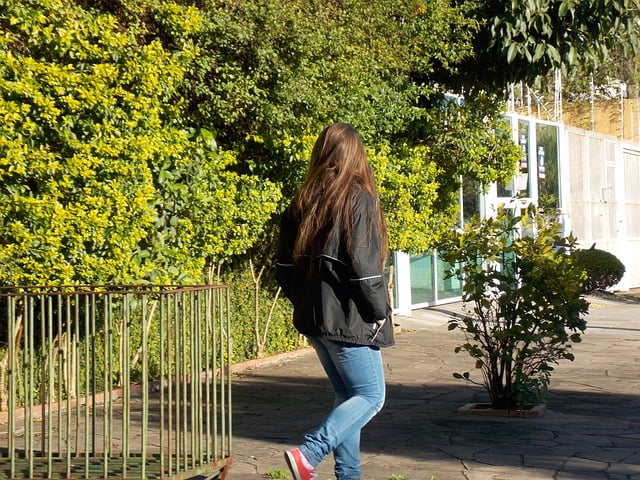Exactly how many gangs are there in the UK? The official answer is that we just don’t know. The Office for National Statistics (ONS) and the Home Office do not collate figures on the number of active gangs in the UK, whilst the Crime Survey for England and Wales only collates minimal information. There are no official figures and ‘best guess’ numbers have to be drawn from historic reports and news articles. A Home Office study several years ago found that up to 6% of 10 to 19-year olds in England and Wales belonged to a gang.
Much of the government response to gangs comes through their Ending Gang and Youth Violence (EGYV) programme and tends to concentrate , not on the number of gangs, but measuring gang related crime. A House of Commons document provides more recent figures from 2016, citing the Metropolitan Police as having an estimated 225 recognised gangs in London, comprising 3,600 gang members, although many were believed to be inactive and the actual figure was closer to 60.
What we are certain of, is that murder, offences of violence, gun crime and particularly knife related crime have all risen in the last few years. Whilst it must be acknowledged that most children and young people carrying knives are not gang members, the reality is that many knife and gun attacks are connected to gang activity. Being a gang member places a young person at serious risk of being added to the one group of statistics that are meticulously counted by both police and the Home Office – the homicide rate.
What is a gang?
Throughout the UK there are several definitions of what constitutes a gang. Categorising a group of people as a gang can be difficult, and most recently there has been a rethink as to how exactly a gang should be classified. The emphasis has shifted more onto the behaviour of the gang and whether they are involved in gang related violence and drug trafficking, rather than the makeup of the group. The most widely used definition is:
“a relatively durable, predominantly street-based group of young people who see themselves (and are seen by others) as a discernible group, for whom crime and violence is integral to the group’s identity. They may engage in a range of criminal activity and violence, may identify with or lay claim over territory, or have some form of collective identifying feature. They are often territorially based, and some gangs are defined by a particular area, postcode or estate name. They are habitually in conflict with other gangs, using violence to gain recognition, status and power over their rivals”.
However, a gang shouldn’t be confused with peer groups of children who are unorganised and often gather together in public places to socialise, even if their association sometimes leads to disorderly or anti-social behaviour. If they do not engage in criminal activity or if there is offending and it is of a lower non-violent level, then they would be considered a peer group not a gang.
How is a gang organised?
The structure, characteristics and often the ethnicity of gangs varies from area to area and will often depend on the local demographic. Most gangs are primarily made up of young people, aged between 13 and 24 years, although gang members have been known to be significantly older and younger than this age group. While gang membership is predominantly male based, young girls and women are increasingly coerced and drawn into gang activity. Gangs often have a fluid and chaotic hierarchical structure where individuals slide up and down the pecking order, dependent on their involvement at differing times. Seniority is often based on longevity of service (elders) with children and young people seen as minions at the bottom of the order. Younger gang members often engage in low level criminality when first joining the gang, e.g. burglary, theft, street robbery, assaults and anti-social behaviour.
Common agency terminology relating to gangs is:
Gang Nominal – this is a police term for someone who has been identified as being a member of a gang. Membership has been corroborated by intelligence from more than one source.
Gang Affiliated – A member of the gang with low status, subscribing to the gang’s customs and values and participating in its illegal activities.
Gang Associate or Gang Involved – someone who does not identify themselves as a gang member but interacts socially, or offends with gang members, either willingly or through coercion or exploitation; or someone who has displayed through conduct or behaviour, a specific desire or intent to become a member of a gang. They may also be gang associated through friendships or family connection. Like gang nominals being classed as a gang associate needs to be corroborated through intelligence sources.
Whilst law enforcement agencies have categorised membership of gangs, the terminologies within gangs differs greatly, based on geographical areas and street slang, e.g. elders (senior members), Wanabees (aspirational non-members) youngers and tinys (young member), foot soldiers etc.
How are women and girls involved in gangs?
Female only gangs do exist but are rare. Most girls often enter gangs through their relationships with gang members. They are not necessarily considered members or take part in the gang’s core activity. Many gangs use girls for specific tasks which often amount to criminal offences, e.g. holding, carrying or transporting weapons, firearms or drugs. Whilst some girls are willing participants, there is compelling evidence that women and girls associating with gang members are at risk of violence, domestic abuse and sexual exploitation. Some gangs require new members to commit a violent sexual offence as part of the initiation process, whilst others might rape a female relative of a rival gang member as part of the conflict between the two gangs. Sexual assaults on female relatives are also used to punish members who have made a mistake or broken the gang code. There is evidence that many incidents of rape and other serious sexual assaults within the gang framework go unreported. Even in the absence of sexual violence many girls will feel pressured into having sex, often through fear of saying ‘no’.
For this reason, great care should be taken when dealing with girls and young women, particularly around decisions to place them into the criminal justice system. Criminalising children who ultimately may have been coerced, controlled and exploited is not a decision that should be taken lightly. Where the offence is not of a serious nature and it is not in the child’s or public interest to do so, emphasis should be put on interventions and education. Studies have shown that many women/girls involved with gangs have mental health, self-harming and eating disorder issues. Where necessary girls and women should be referred to appropriate support services e.g. domestic abuse advisors, substance misuse workers.
What is a criminal network?
Organised criminal groups or networks are different from gangs. They consist of individuals who are purely involved in crime for personal gain (financial or otherwise). Organised crime includes, people trafficking, supply of firearms, drug importation, trafficking and supply (this includes county lines drug supply). It causes significant harm to the community. There is no doubt that the gangs landscape is evolving. Whereas 10 years ago a gang would be defined by its postcode with the emphasis on protecting territory, many gangs have progressed and are now focussed on the drug market, both locally and through the county lines ‘business model’.
What is Youth and Gang related violence?
Youth violence is often the result or sign of gang related activity. However, professionals should be mindful that serious youth violence may still occur without any gang link. Serious youth violence are offences such as murder, rape, shootings, wounding and causing grievous bodily harm.
Section 34(5) Policing and Crime Act 2009 defines gang-related violence as: “Violence or a threat of violence which occurs in the course of, or is otherwise related to, the activities of a group that:
- a) consists of at least 3 people; and,
- b) has one or more characteristics that enable its members to be identified by others as a group.”
What is Gang related drug dealing?
Section 34(5) Policing and Crime Act 2009 defines gang-related drug dealing activity as “the unlawful production, supply, importation or exportation of a controlled drug which occurs in the course of, or is otherwise related to, the activities of a group that:
- consists of at least 3 people, and
- has one or more characteristics that enable its members to be identified by others as a group”.
What dangers do children and young people face by belonging to a gang?
Specific risks and dangers differ from area to area. However, generally gang membership significantly increases the chances of a young person becoming involved in criminality, antisocial behaviour and drug use. Offending and substance misuse can have a long-term and potentially life long impact on a young person’s ability to reach their potential. Exploitation can cause trauma, mental and physical health issues. Specific dangers include:
An integral part of gang culture, with gangs using violence to demonstrate and assert their power and authority in their local area. Membership means abiding by a certain honour code, part of which is defending territory and other gang members. This often means that when one member is attacked, or territory is invaded, there is a collective response and retaliations can escalate quickly and violently. Violence can also occur within the gang e.g. as a punishment where a member breaks the ‘code’. Children and young people who are associated with gangs are for more likely to be forced into violent act; or witness or be victims of violence. They may witness, or experience acts of extreme violence, rape, torture and murder. Whilst all police forces should now have in place systems for monitoring gang related violence, the scale of gang violence is still unclear, mainly because young people are unlikely to report gang related crime to the police. This is often due to fearing reprisals against them or their families, together with a lack of confidence in the authorities’ ability to protect them.
Children and young people who are members or associated with gangs are likely to become involved in offending. The gravity of the criminality escalates with gang membership, exposing children to more serious and lucrative crimes such as drug supply, robbery, knife and gun crime. Young people will be expected to become involved in the criminal activities of the gang and will feel pressured into doing so.
Whilst firearms are often used for pre-planned attacks, knife possession is often seen as the norm, with gang members routinely carrying a knife through for self-protection. This gives individuals a false sense of power and control. Carrying any type of weapon increases the young person’s chance of becoming involved in serious incidents and therefore becoming victims themselves. Recently there has been an increase in gang members adapting weapons, with dogs and corrosive substances (ammonia and acid) being used. There is evidence that indicates that gang members have switched onto the fact that using younger children and females to carry their weapons is less likely to lead to detection.
Drug use by gang members is commonplace. A vulnerable young person joining a gang may have already experimented with drugs but will now see this as part of the norm, part of the ‘belonging’. Many members are also involved in drug supply, either for financial gain or to fund their own drug habit. The ease at which gang members can access drugs means that any drug use by a young person can quickly escalate out of control e.g. casual use of cannabis can easily and rapidly turn to crack cocaine addiction. Drug use and supply also heightens the chances of a young person entering the criminal justice system or becoming involved in drug related violence.
Gang members are more likely to have suffer poor attendance, have special educational needs, attend Pupil Referral Units or end up permanently excluded from education. School exclusions only aggravate the young person’s circumstances, often placing them back into the chaotic home situation they came from and pushing them further into gang culture. The effects of regular exclusions are obvious – poor education attainment which may lead to longer term problems such as unemployment, illiteracy etc.
Whether it is for initiation purposes, an act of retaliation or a punishment; sexual violence, bullying and exploitation are embedded in gang culture. Whist girls are of particular risk of sexual and exploitative situations, boys are often coerced into committing such acts and can often be victims themselves. Criminal exploitation can take many forms, whether it is forcing young people to commit street robbery as part of an initiation ceremony, coercing them into committing serious assaults with knives and firearms, or trafficking them for the purpose of supplying drugs. The consequences for any type of criminality are clear – arrest, convictions and imprisonment, together with the increased risk of retaliatory violence by rival gang members.
Whilst the links between gangs and extremist groups hasn’t been particularly evident in the UK, it would be naïve to assume that gangs are not a prime place for extremists to push their ideology. For several years, the UK’s major newspapers have published articles about radical Islamist’s and far right extremists targeting and recruiting gang members. Those that are most vulnerable to being drawn into gang culture and violence, are equally vulnerable to getting in radical groups.
In the second part of this article, we look at the type of children who are more likely to be recruited to gangs and the indicators that may suggest gang membership or affiliation.

Get Involved!
Share Your own Safeguarding News and Research to reach a wider Audience
From Our Blog
Police Protection – A practical guide
Each year across the UK, hundreds of children are removed from harmful situations by the police and placed into ‘Police Protection’. We take a look at this valuable tool, which if used responsibly, can be a very valuable tool in safeguarding vulnerable children.
Sextortion – Guide and Resources
Sextortion – a guide and links to useful resources.
Dementia -The Herbert Protocol
We take a look at The Herbert Protocol, a simple risk reduction tool to be used in the event that an adult with care and support is reported missing. It is widely associated with people living with dementia who go missing, providing police with vital information to enhance the chances of locating a person quickly and safely.
Child Abduction Warning Notices (CAWN’s)
Many missing children are harboured by adults when missing. We take a look at Child Abduction Warning Notices (CAWNS), what they are used for, the processes involved and the law if they are breached.
Related Posts
The Safeguarding Hub
Share Your Safeguarding News And Research To Reach A Wider Audience







